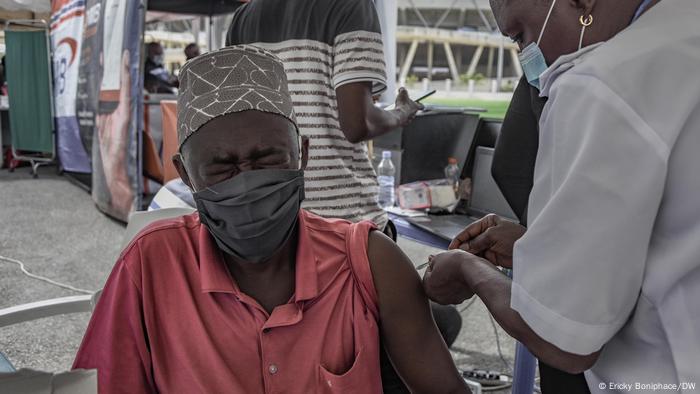Why Biden hasn't scored a political win from canceling $17 billion in student loans
By Katie Lobosco, CNN
Sun March 27, 2022

President Joe Biden walks on the South Lawn of the White House before boarding Marine One in Washington, DC, on March 18, 2022.
Washington (CNN)Joe Biden has canceled more student loan debt than any other President -- a notable fact that's flown under the radar.
Taking a piecemeal approach, the Biden administration has expanded existing loan forgiveness programs for borrowers who work in the public sector, those who were defrauded by for-profit colleges and borrowers who are now permanently disabled.
Those moves have delivered significant relief to more than 700,000 borrowers, totaling more than $17 billion.
Yet some voters feel misled by the President, who had supported canceling $10,000 for each of the 43 million federal student loan borrowers while on the campaign trail.
"He's not delivering on his promise," said Jennifer Lewis, a 57-year-old nurse practitioner in Washington state who has about $80,000 in student loan debt.
"If he were to run again, I would think twice about voting for president at all," added Lewis, a self-described "super progressive."
Biden is also facing a drumbeat of pressure from some key Democratic lawmakers who are urging him to do more and cancel $50,000 per borrower.
That puts Biden in a tough political spot as federal student loan payments are set to resume May 1 after a two-year, pandemic-related pause. Biden could decide to extend the pause again, a move that could please borrowers in a midterm election year who are struggling with rising inflation.
But not every Democrat thinks it's a good idea to broadly cancel student debt, and some economists warn that extending the payment pause could make inflation worse.
"I think it's important to keep in mind that there is far from a consensus viewpoint among Democratic members of Congress and Democratic voters that large sums of debt should be canceled," said Michelle Dimino, an education senior policy adviser at Third Way, a think tank that promotes center-left ideas.
Pandemic, inflation set back some borrowers
Sandeep and Tom Berry were hoping Biden would cancel some of their student debt but have lost hope of that pledge coming to fruition.
The North Carolina couple, who both identify as moderates, have $160,000 in student loan debt borrowed to pay for Tom's MBA.
"We knew what we signed up for. Tom and I made a decision to take on these loans," said Sandeep, 39.
But the pandemic threw a wrench into their financial plans. Sandeep, a consultant, planned to return to work once both of their children were in school. But she put those plans on hold when schools shut down and both kids were home for remote learning. She now hopes to reenter the workforce next year.
"I'm not one to ask the government to give away money, but given Covid -- a once-in-a-lifetime situation -- I feel like forgiving student loans as a one-time thing would really help," she said.
When payments resume, the Berry family will be on the hook for $1,000 a month -- a payment the couple says will be hard to make since inflation has made their everyday expenses higher.
"To be honest, the loans have been paused for so long I don't know what we're going to do when they are put back into effect," said Tom, 43, noting that he thinks an unprecedented response is needed to meet the current situation, but realizes canceling debt won't be a lasting solution.
"If he (Biden) waved a magic wand and all my debt went away, my life would get exponentially better. But I know it doesn't solve the larger problem," he added.
How a fringe issue became mainstream
The progressive wing of the Democratic party was pushing for student debt cancellation long before the pandemic. Born out of the Occupy Wall Street movement, a grassroots organization known as the Debt Collective organized its first "student debt strike" in 2015.
About a year ago, a Monmouth University poll found that 61% of adults supported canceling $10,000 in college debt for anyone with an outstanding federal loan. Fewer people, 45%, supported canceling $50,000 in debt per borrower.
Biden has never been all-in on broadly canceling student debt. But he made it clear during the presidential campaign, after the Covid-19 pandemic began, that he was in support of some federal student debt cancellation. He outlined specific policy proposals in April 2020 in an olive branch to supporters of Sanders, who had just dropped out of the race.
Those proposals called for immediately canceling a minimum of $10,000 of student debt per person as a response to the pandemic, as well as forgiving all undergraduate tuition-related federal student debt from two- and four-year public colleges and universities for those borrowers earning up to $125,000 a year.
Since taking office, Biden has resisted pressure to cancel debt on his own with an executive order. It's not totally clear that he has the authority to do so. Last year, Biden directed lawyers at the Department of Education and the Department of Justice to evaluate whether he does, in fact, have the power to broadly cancel federal student loans -- but the administration has not disclosed those findings.
Instead, Biden has urged Congress to pass legislation that cancels $10,000 per borrower. He also suggested that cancellation should exclude high-income borrowers, arguing last year that the government shouldn't forgive debt for people who went to "Harvard and Yale and Penn."
But key Democratic lawmakers, including Majority Leader Chuck Schumer, continue to call on Biden to cancel $50,000 for every borrower. Hundreds of advocacy groups, including the nation's two biggest teachers' unions and the NAACP, have also urged the administration to broadly cancel student debt. And former Education Secretary John King, a Democrat who is now running for governor of Maryland, has called on Biden to cancel student debt through executive action.
"I get it, I talk to people who have student debt and it's real for them," current Education Secretary Miguel Cardona told CNN earlier this year.
"But the President takes this seriously," he said, noting that the administration is working to fix the system to help future students, too, as they weigh borrowing to pay for school. The department has started rewriting a federal rule, known as gainful employment, that aims to prevent students from taking on too much debt to attend predatory for-profit colleges. The rule was revoked by the previous administration.
Targeted debt relief for 700,000-plus people
More than 700,000 people have seen their student debt wiped away under Biden, some of whom had been waiting months, if not years, for the Department of Education to process their forgiveness claims under existing relief programs.
Last year, the Biden administration overhauled the Public Service Loan Forgiveness program that cancels outstanding federal student loan debt for those who work in the government and nonprofit sectors after they've made 10 years of payments.
The administration temporarily expanded the eligibility criteria until October 31, 2022, so that the forgiveness applies to borrowers who have older loans that didn't originally qualify as well as those who were in the wrong repayment plan but met the other requirements. So far, the Department of Education has identified 100,000 borrowers with about $6.2 billion in loans who are eligible for student debt cancellation due to the waiver, though not all of them have seen their debt wiped away yet.
The department has been chipping away at a backlog of forgiveness claims filed under a policy known as borrower defense to repayment that allows former students who were defrauded by their colleges to seek federal debt relief. Under that policy, the Biden administration has canceled about $2 billion in debt held by more than 107,000 individuals who attended for-profit colleges like ITT Technical Institute and DeVry University.
The department also improved efforts to reach borrowers eligible for debt relief because of permanent disabilities.
But there were still more than 200,000 unresolved borrower defense claims as of September, the latest data available, according to the Project on Predatory Student Lending, a group that represents borrowers in an ongoing lawsuit over unprocessed borrower defense claims.
The Biden administration's efforts have yet to deliver debt relief for Lionel Siongco. He filed a borrower defense claim last year, arguing he was misled by the Art Institute of California in Hollywood, a campus that was part of a for-profit chain that abruptly shuttered in 2019 after losing its accreditation. In his claim, which is pending, he's arguing the school inflated graduation rates and job placement numbers.
Siongco, now 30 and living in California, earned an associate degree in fashion design from the school about eight years before it closed. He later earned a bachelor's degree from the Fashion Institute of Technology, a public college in Manhattan, but he said the institution did not accept any of his previous credits.
He hopes the Department of Education will cancel the loans he borrowed to attend the Art Institute and said he is "so disappointed" that Biden hasn't broadly canceled student debt.

Lionel Siongco, a student loan borrower, is disappointed that Biden hasn't canceled more student debt.
"If we can bail out banks and corporations in this country, why can't we invest in the future and the education of its citizens?" he asked.
Siongco, a progressive who has more than $20,000 in student debt remaining, said that he'll be voting for a Democrat for president. But he's concerned that broad student loan forgiveness won't remain a point of discussion for lawmakers.
Payment pause delivered more relief, without a political boost
In addition to Biden's actions to expand existing forgiveness programs, he has also extended the pandemic-related pause on federal student loan payments and interest three times. Congress initially provided an automatic pause on payments and interest for most federal student loans in March 2020, which was then extended by the Trump administration.
A recent analysis from the Committee for a Responsible Federal Budget found that the pause on interest and payments -- from March 2020 through the scheduled end date of May 1, 2022 -- will result in debt relief equivalent to an average of $5,500 per borrower. The analysis notes this relief is largely due to the halt on interest accumulation and has benefited doctors and lawyers -- who tend to borrow huge amounts of money for their graduate degrees -- the most.
The analysis may underestimate the relief because it doesn't take into account the added benefit that those pursuing Public Service Loan Forgiveness receive from the payment pause. They are still receiving credit toward the 10 years of required payments as if they had continued to make them during the pandemic, as long as they are still working full time for qualifying employers.
Federal borrowers who didn't make any payments during the pandemic will owe the same amount when payments resume as they did in March 2020. But they will have saved money thanks to the interest accumulation pause. Those savings are in addition to the $17 billion canceled by the Biden administration for defrauded borrowers, public sector workers and those permanently disabled.
"I don't think, unfortunately, that's going to give Democrats the political win they are looking for," said Marcela Mulholland, political director at Data for Progress, a think tank and polling firm that supports progressive causes.
"I think canceling student debt or extending the pause are examples of things Democrats should be doing ahead of the midterms. There are very obvious adverse political consequences to restarting payments in an election year," she added.
Administration officials have recently said they are considering another extension before payments are set to resume on May 1.
The pause costs the government roughly $4 billion a month, according to the Committee for a Responsible Federal Budget.
Economic impacts
But some economists criticize student debt cancellation proposals as regressive, using taxpayer dollars to disproportionately benefit higher-wealth households because they tend to have more student debt. While it would have a big financial benefit for many, partial student loan cancellation is expected to have a only a modest effect on immediately boosting the economy since it would do little to increase the amount of cash households have to spend.
The Committee for a Responsible Federal Budget estimates that canceling all federal student loan debt would cost roughly $1.6 trillion, canceling $50,000 per borrower would cost between $675 billion to $1 trillion, and canceling $10,000 per borrower would cost between $210 billion and $280 billion.
Canceling existing student debt would also do little to help future college students, borrowers who have already paid off their loans and those who never went to college in the first place.
Biden also campaigned on making community colleges free, a move that would require an act of Congress, but that proposal was cut from his Build Back Better agenda.
Joseph Steinfels, a public defender in Illinois, sees student loan debt cancellation as something that would increase the economic disparity in the US.
"I can't get past the fact that this would not help my clients, the ones truly suffering, or the millions of others who never set foot in college," said Steinfels, a former Marine.
"It's taking taxpayer dollars and creating unjust enrichment," he said.
Steinfels, now 45, fully paid off the loans he borrowed for his undergraduate degree. He used a combination of military benefits and his own funds to pay for his three graduate degrees and a certificate.
"I personally had a unique path, and I'm just so grateful," he said.
Steinfels, who has four children, considers himself an independent and said student loan policy wouldn't be a "make-or-break" issue for him next time he goes to the polls.




















